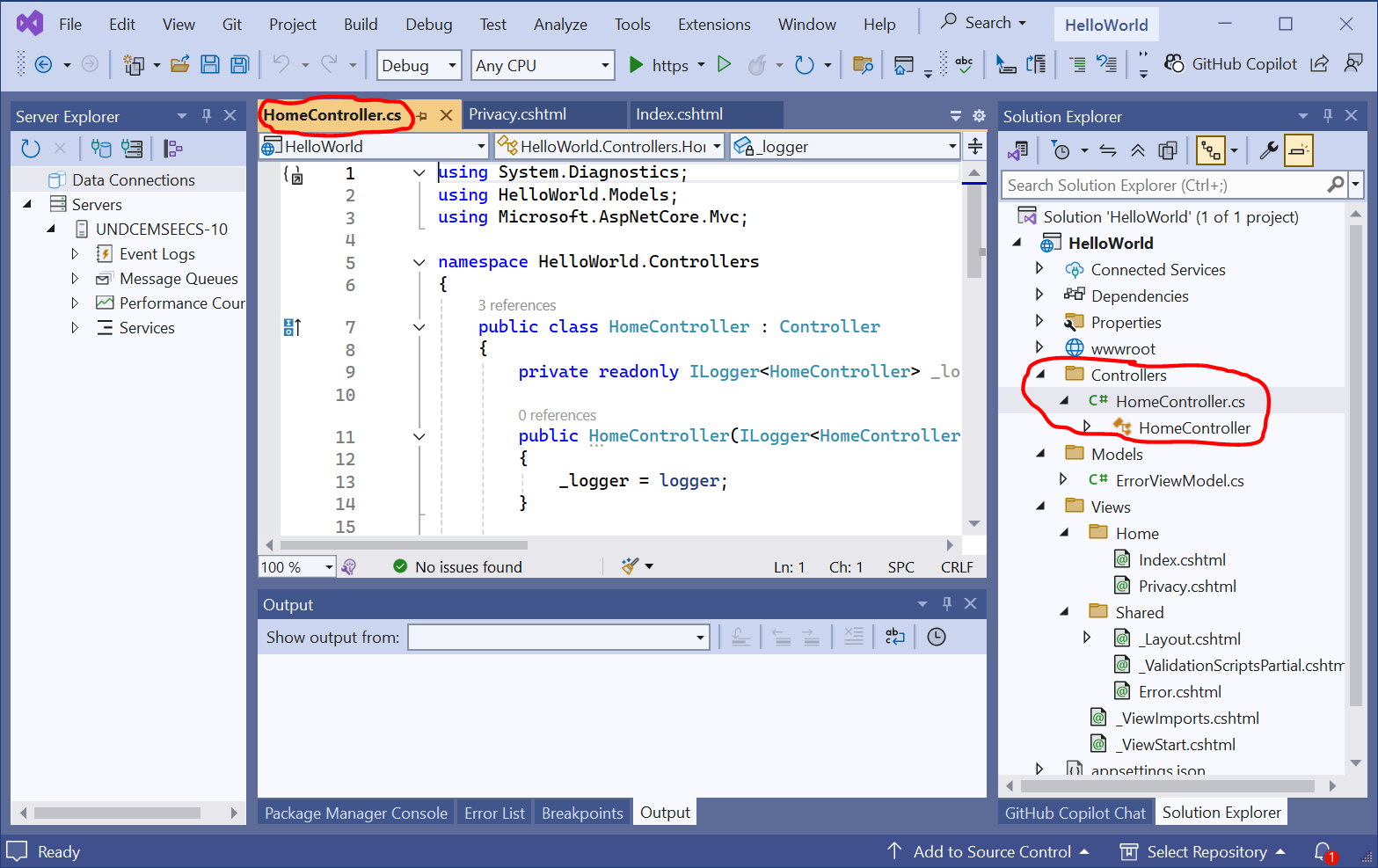MVC Controller:
HomeController.cs

|
using System.Diagnostics;
using HelloWorld.Models;
using Microsoft.AspNetCore.Mvc;
namespace HelloWorld.Controllers {
public class HomeController: Controller {
private readonly ILogger<HomeController> _logger;
public HomeController( ILogger<HomeController> logger ) { _logger = logger; }
public IActionResult Index( ) { return View( ); }
public IActionResult Privacy( ) { return View( ); }
[ ResponseCache( Duration = 0,
Location = ResponseCacheLocation.None, NoStore = true ) ]
public IActionResult Error( ) {
return View( new ErrorViewModel { RequestId =
Activity.Current?.Id ?? HttpContext.TraceIdentifier } );
}
}
}
|
using System.Diagnostics;- The namespace provides classes that allow you to interact with system processes, event logs, and performance counters.
using HelloWorld.Models;-
It is a directive that allows you to use classes defined within the
Modelsfolder of your project, assuming that folder contains your data models. using Microsoft.AspNetCore.Mvc;- It provides types required to build an MVC app.
namespace- A namespace is a declarative region that provides a scope to the identifiers (names) such as variables, functions, classes, etc. It’s essentially a container that helps organize and prevent naming conflicts, especially in large projects. Think of it like a directory in a file system, where you can have files with the same name as long as they are in different directories.
|
“My sister was with two men in one night... she could hardly walk after that. Can you imagine? Two dinners? That’s a lot of food.” — Sarah Silverman |